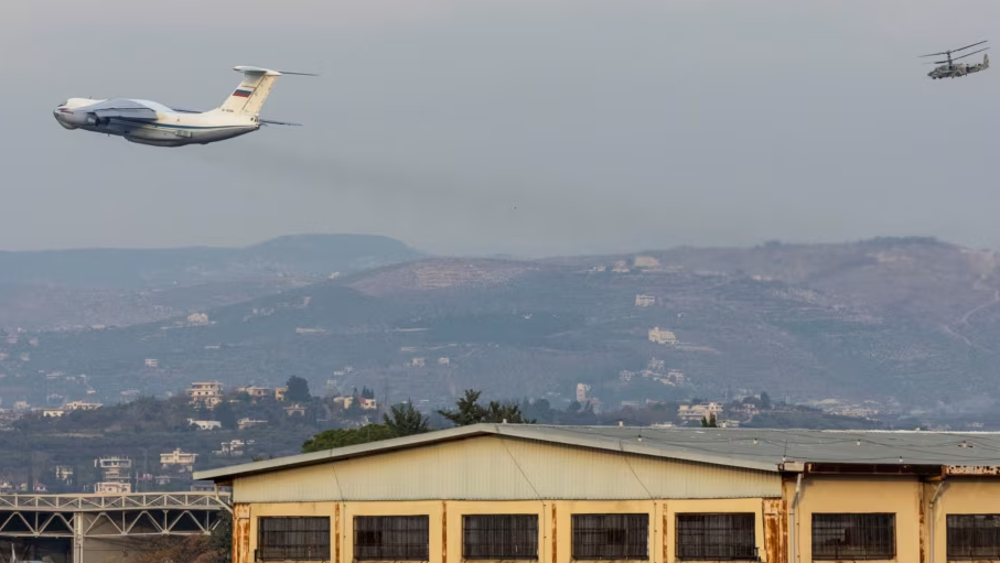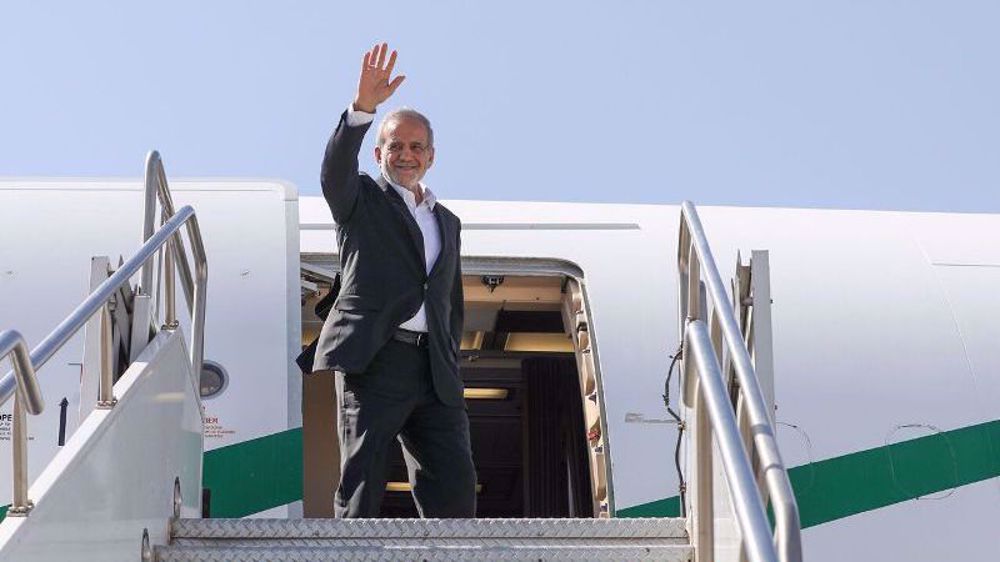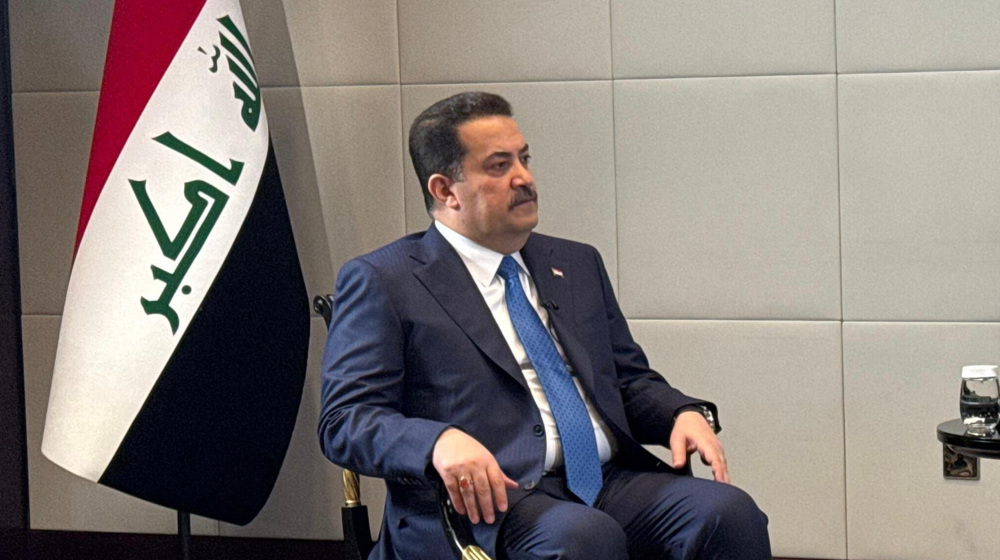Iran says own aircraft used for 'responsible' pullout from Syria
Iranian Foreign Ministry spokesman Esmaeil Baghaei has said that the advisory presence of the Islamic Republic in Syria was aimed at supporting the Syrian army, combating terrorism, and preventing insecurity from spreading to the broader region.
“Iran’s advisory presence in Syria was initially aimed at supporting the Syrian army, combating terrorism, and preventing insecurity from spreading to neighboring areas and the broader region. The decision to withdraw advisory forces was also a responsible move, considering the prevailing conditions in Syria and the region,” Baghaei noted.
Recently, Russian President Vladimir Putin addressed questions regarding the developments in Syria during his annual press conference titled “Direct Line,” providing insights into the battlefield dynamics leading to President Bashar al-Assad’s fall, as well as the coordination between the Islamic Republic of Iran and the Russian Federation.
Putin noted that Russia had no ground forces in Syria, stating, “We have two bases there (Syria)—an air force base and a naval base. The ground forces consist of Syria’s own military and, as is well known, certain Iran-aligned combat units. At one point, we even withdrew our special operations forces from the area. Our mission there was not solely about fighting.”
He also shared his account of the military developments in Syria, saying, “When opposition groups approached Aleppo, approximately 30,000 troops were defending the city. Around 350 militants entered the city. Syrian government forces, alongside Iranian-aligned units, retreated without resistance, detonating their positions as they withdrew. Except for isolated armed clashes, this was the general pattern across Syrian territory.”
Iran denounces the attack by foreign-backed militants on its embassy in the Syrian capital Damascus. https://t.co/qLDL0vwyBx pic.twitter.com/nNUH0kpEGN
— Press TV 🔻 (@PressTV) December 8, 2024
He noted, “Previously, our Iranian allies would request assistance to deploy their forces into Syria. Now, they are asking for help to withdraw them. We evacuated 4,000 Iranian fighters from the Hmeimim base to Tehran. Some Iranian-aligned units, avoiding direct engagement, relocated to Lebanon, while others moved to Iraq.”
Since the onset of a new phase of developments in Syria and Assad’s departure to Russia, multiple Iranian officials—including the foreign minister, the foreign ministry spokesperson, and Iran’s ambassador to Syria—have addressed the situation through various television programs and press conferences.
They discussed the events leading up to the collapse of Assad’s government in the weeks and days preceding his departure. However, Putin’s remarks during his annual press conference introduced new details that had not been previously disclosed.
Reflecting on the long-standing cooperation and coordination between Iran and Russia in their joint fight against terrorism in Syria, Baghaei noted, “It is not unusual for parties involved in Syria’s developments to present their own narratives about the causes and actors behind these events.”
“However, it seems that some of the comments made regarding Iran’s advisory role in Syria during the final days leading to Damascus’s fall may not have been based on precise information,” he added.
He reiterated that Iran’s advisory presence in Syria was initially aimed at supporting the Syrian army, combating terrorism, and preventing insecurity from spreading to neighboring areas and the broader region.
According to Baghaei, the decision to withdraw advisory forces was also a “responsible move,” considering the prevailing conditions in Syria and the region.
‘Iran’s presence in Syria changed after fall of Daesh’
Baghaei highlighted that Iran entered Syria at the invitation of its legitimate government, stating, “Iran and Syria have had effective cooperation over the years in combating terrorism, successfully preventing the dangerous spread of Daesh in Syria and Iraq, as well as curbing terrorism in the region.”
He also explained, “Following the fall of Daesh, Iran’s military presence on Syria’s defensive lines shifted. It became limited to providing advisory assistance aimed at preventing the resurgence of Daesh and Takfiri terrorism while strengthening Syria’s military capabilities against the Zionist regime’s provocations.”
He stated that this approach proved successful. As witnessed, immediately after the withdrawal of Iranian advisory forces, the occupying regime seized strategic parts of Syrian territory and destroyed critical defensive infrastructure in the country.
Iran prefers official channels for dialogue with Russia: Spox
Baghaei also pointed to Iranian nationals evacuated from Syria. “These individuals included the families of diplomats, staff from Iran’s diplomatic, consular, and cultural missions in Syria, Iranian pilgrims, some non-Iranian pilgrims, and others who had traveled to Syria to assist Lebanese refugees.”
The diplomat also noted that all Iranian nationals were evacuated to Iran using Iranian aircraft via the Hmeimim airbase, which, in coordination with Russia, was consistently used as a supplementary airport alongside Damascus International Airport.
The spokesperson also emphasized that Iran and Russia maintain significant relations across various fields, with continuous dialogue taking place at multiple levels, saying, “We prefer that the exchange of views and experiences occurs through official channels.”
VIDEO | California Wildfires Leave Residents Struggling with Insurance Gaps and Housing Shortages
Leader: Palestinian patience, resistance forced Israel to back down
VIDEO | South African, Palestinian youths use sport to boost resistance
Iran welcomes Gaza truce, urges prosecution of Israeli authorities for genocide
VIDEO | Israeli airstrike on Jenin kills 6 Palestinians, injures others
VIDEO | Canada after Trudeau
IRGC: Gaza truce ‘irreparable defeat’ for Israel, great victory for Palestinians
Iran, Tajikistan presidents oversee signing of 23 MoUs to boost ties











 This makes it easy to access the Press TV website
This makes it easy to access the Press TV website